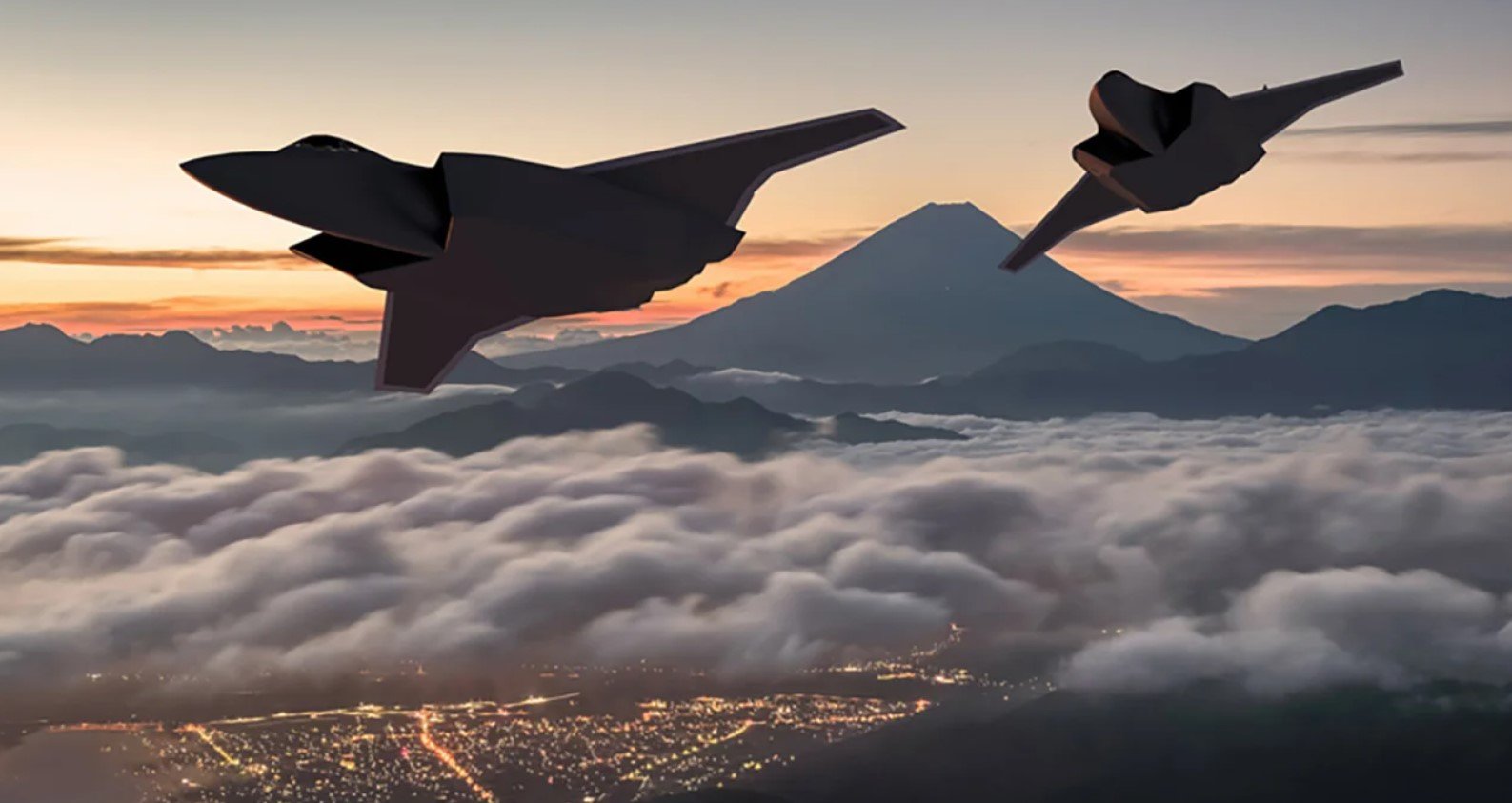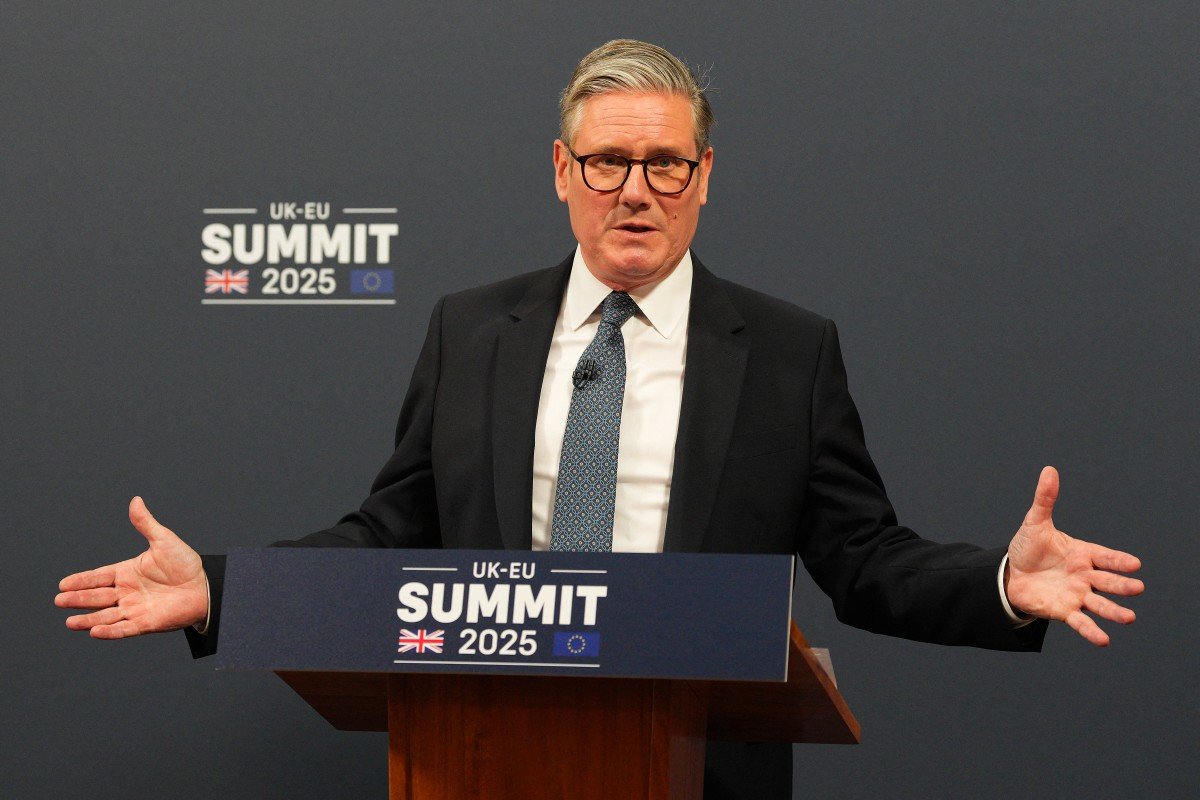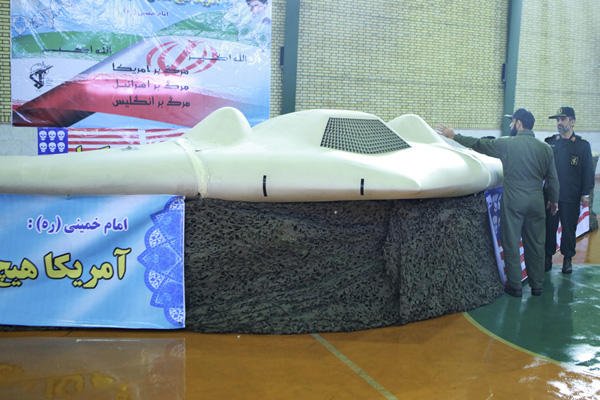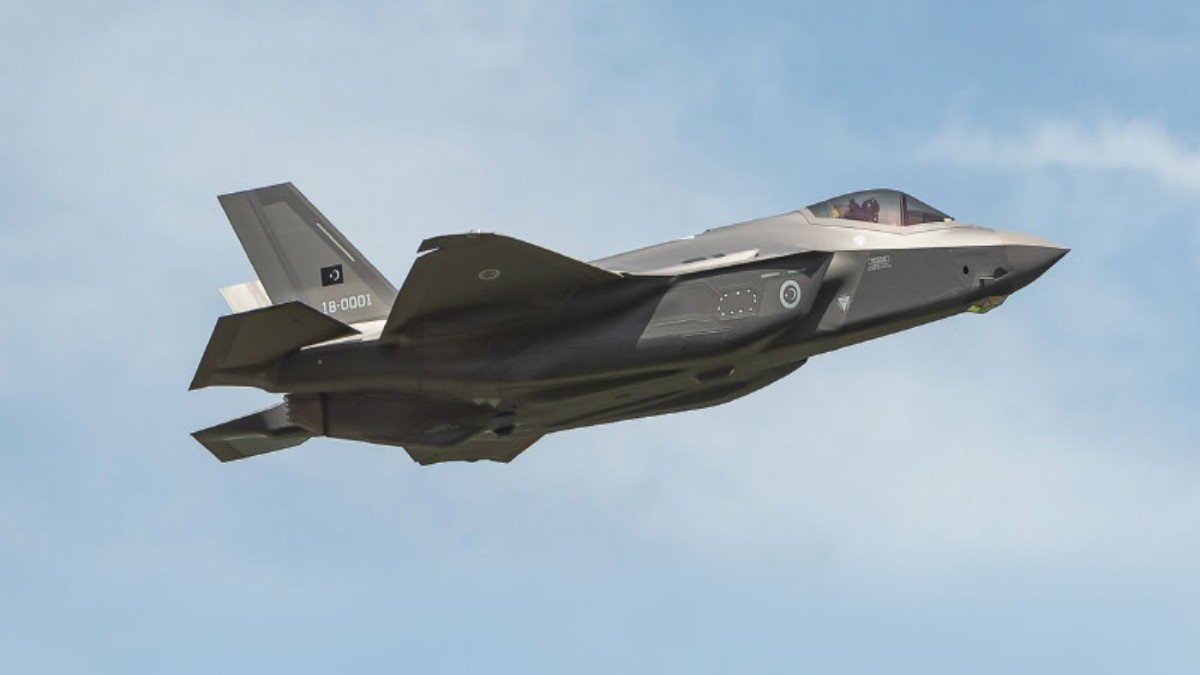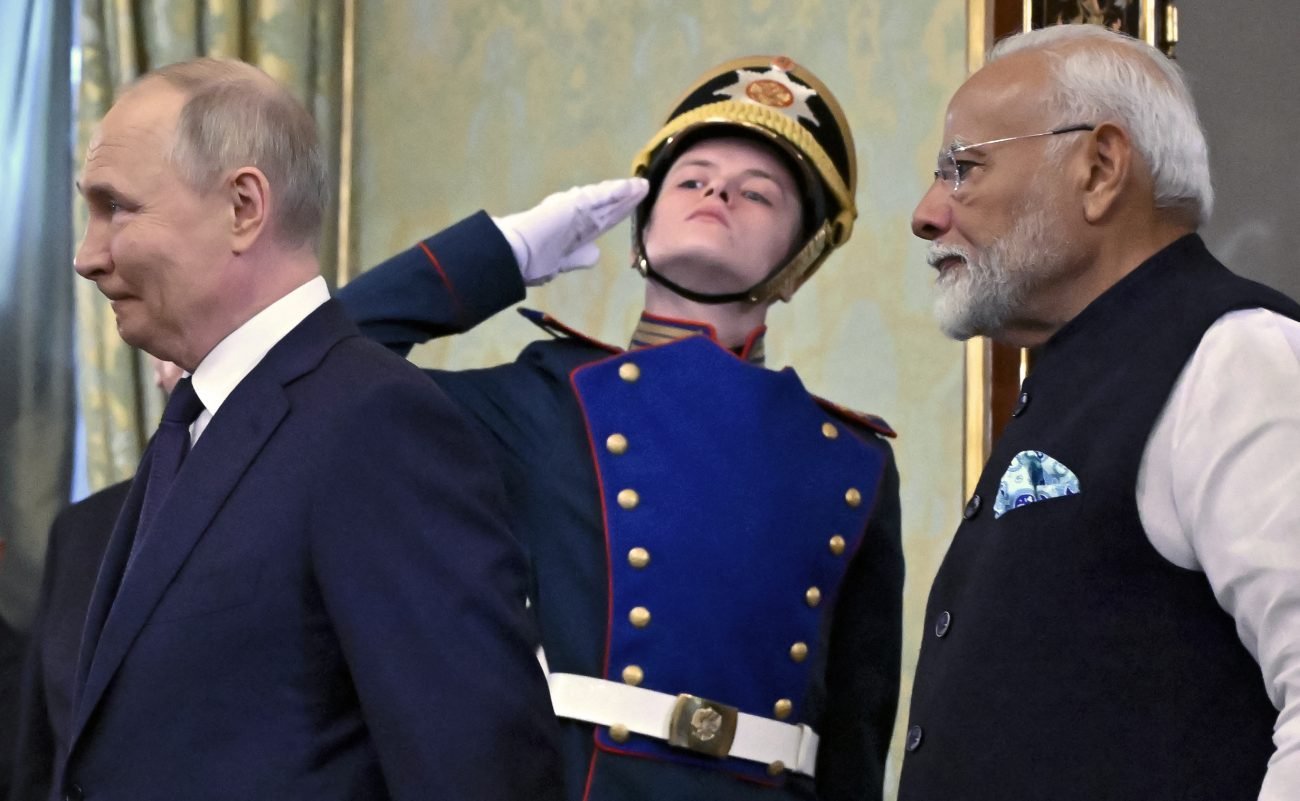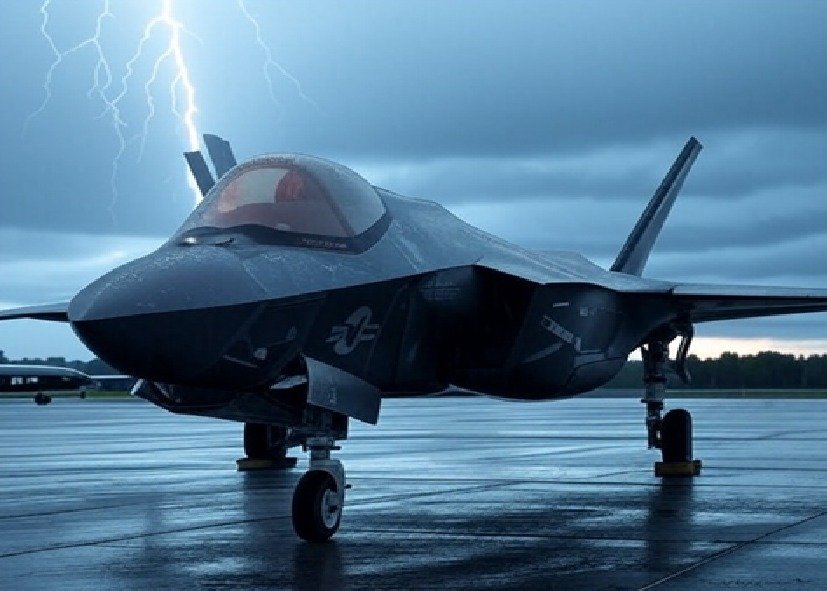Amid reports that the Japan-UK-Italy Global Combat Air Program (GCAP) is facing delays, the United States has swooped in to pitch the F-47 sixth-generation aircraft to Japan. The big question is: will Japan bite the bullet?
A report published in Japanese publication Asahi Shimbun states that the Japanese officials are trying to make sense of the sudden phone call made by Donald Trump to Japanese Prime Minister Shigeru Ishiba, in which he gloated about the success of his recent trip to the Middle East, and asked Ishiba to take a look at the F-47.
There was no specific agenda to the “friendly call” between the two allies.
After discussing his three-country tour in detail, Trump randomly brought up the F-47, a contract for which was awarded to Boeing in March 2025.
Trump said the “47” in “F-47” is a good number, and asked Ishiba to concur, in what can only be described as typical Trump fashion of conversation. He also heaped praises on the F-22, which the US never sold to Japan due to the sensitivity of that technology, even though the latter wanted it.
Trump then went on to talk about the F-55, an upgraded, twin-engine F-35 variant that he proposed during a presser in Qatar recently.
The President then asked Ishiba if he wanted to see the amazing fighter jets that the United States had, adding that he would get the “best” for Japan.
Although Trump did not clarify what he meant by that, Japanese officials later told the publication that Trump only asked Ishiba if Japan was interested in purchasing fighter jets built in the United States and did not urge the country to buy them.

The US President has been vocal about exporting a toned-down variant of the F-47 to key allies.
“Our allies are calling constantly, they want to buy them all,” he said at a press briefing announcing the F-47. “We like to tone them down about 10 percent, which probably makes sense because someday maybe they’re not our allies, right?”
Japan, for one, has already purchased the F-35 and is currently mulling the possibility of expanding the order of these fifth-generation stealth fighters. Additionally, Ishiba has also expressed interest in purchasing American-made C-17 Globemaster III transport planes.
Japan is already developing its sixth-generation fighter under the ‘Global Combat Air Program.’ In 2022, the UK, Japan, and Italy decided to pool their resources and technology to develop a sixth-generation aircraft with cutting-edge technology, and the Global Combat Air Programme (GCAP) alliance was formally established.
The program combines elements of the Japanese F-X and British Tempest fighter programs, aiming to replace the F-2 in the Japan Air Self-Defense Force and the Eurofighters in the air forces of the United Kingdom and Italy.
Both the F-47 and the GCAP programs prioritize similar sixth-generation features, including stealth, artificial intelligence (AI), manned-unmanned teaming (MUM-T), and sensor fusion.
The GCAP partners state that the aircraft will be among the world’s most advanced, networked, versatile, and interoperable fighter jets. With the help of their software-driven interactive cockpits, integrated sensor arrays, intelligent weapons systems, and next-generation radars, both next-generation combat aircraft will provide more data, enhancing situational awareness.
The GCAP has largely remained on track, unlike the other European next-generation fighter program, Future Combat Air System (FCAS), which France, Germany, and Spain are developing.
The GCAP partners have amicably established the GCAP International Government Organization (GIGO), which is responsible for administering the industrial framework, setting capability requirements, and supervising the development of the next-generation fighter jet.
Then why is the US pitching the F-47 to Japan at all?
It seems like there is a tiny trouble that the US could be capitalising on: Japan’s apprehension about the rollout schedule of the sixth-generation aircraft.
Japan Fears A Delay In The GCAP
The trilateral GCAP alliance had previously declared that the aircraft would make its first flight in 2027 and be ready for induction by 2035 – an ambitious timeframe. However, according to a recent Reuters report, Japan is growing apprehensive about the next-generation aircraft meeting its rollout target.
Citing two sources, the report claimed that Britain and Italy’s lack of urgency is causing delays in the joint Global Combat Air Programme (GCAP) and will eventually push the deployment to after 2040.
Though an official statement in this regard has not been made by the trilateral grouping, a senior British official on the GCAP team reportedly noted that the Tempest will replace the Eurofighter Typhoon in the Royal Air Force (RAF) in the 2040s. Thus, sparking suspicions.
If the GCAP is delayed, Japan will need to plan quickly to ensure it has sufficient fighters to combat Russian and Chinese aircraft that frequently test its air defenses.
This may involve a potential purchase of additional F-35s and modifying its existing F-2s to address the air defense gap. The Reuters report emphasized that Ishiba could consider purchasing additional Lockheed Martin F-35s at approximately $100 million each as leverage in tariff negotiations with US President Donald Trump.
But a fifth-generation fighter cannot match the capability of a sixth-generation aircraft.

The fear of GCAP delays comes as Tokyo grapples with a growing threat from China. It is pertinent to note that while the GCAP is now unlikely to roll out by 2035, China is accelerating the testing of two sixth-generation fighter jet prototypes, namely the J-36 and the J-50. If China inducts a sixth-generation fighter by 2030, the capability gap between the two states will widen.
This is, perhaps, where Trump’s offer for the F-47 has come in.
According to an infographic recently posted on X by US Air Force chief, General David Allvin, the F-47 is anticipated to become operational between 2025 and 2029—more than a decade before the GCAP’s rollout date if delays are factored in.

However, a delay in GCAP alone could not determine the course Japan takes, and the country will have to assess the many pros and cons associated with either program before arriving at a decision. While the F-47 will be a quick fix that will bolster Japan’s combat capability, it will take away the chance Tokyo finally has at self-reliance.
What Will Japan Choose?
Before Japan signed up to the GCAP, there were whispers that it joined ranks with the UK and Italy because Washington did not invite it into the Next-Generation Air Dominance (NGAD), now named the F-47.
In addition to that, Japan chose to collaborate with the UK and Italy due to a range of factors, including a desire for greater autonomy in defense technology, a reduced reliance on US combat aircraft, and the belief that working with other countries could provide a more cost-effective means of developing a next-generation fighter.
It is typical for multinational programs to encounter turbulence due to differences among partners, which can potentially lead to delays and disruptions.
Last month, Italian Defense Minister Guido Crosetto accused the UK of withholding crucial technologies within the framework of the GCAP. Similarly, France and Germany have repeatedly clashed over the sharing of technology and the distribution of responsibilities within the FCAS program.
Before this, we saw India withdraw from the joint Indo-Russian Fifth Generation Fighter Aircraft (FGFA) program in 2018, primarily due to concerns about the aircraft’s performance and high costs. Though a next-generation aircraft was of paramount importance, the reservations India held were too big to compromise on.
The GCAP is unlikely to remain immune from the frictions that come with a multi-national arrangement. This is likely why the US chose to go solo with the development of its sixth-generation fighter, and perhaps because it knew buyers would line up anyway.
Writing for the EurAsian Times earlier, Ambassador Gurjit Singh argued that the US did not invite Japan to partner in its Next-Generation Air Dominance (NGAD) program “because the Americans believe that whatever they develop would be sold to Japan.”
The US has projected the F-47 as the best in the world.
“In terms of all the attributes of a fighter jet, there’s never been anything even close to it, from speed to maneuverability to what it can carry as payload. And this has been in the works for a long period of time. America’s enemies will never see it coming,” Trump said in March 2025.
The aircraft will have “state-of-the-art stealth technologies, making it virtually “invisible” and will fly alongside multiple autonomous drone wingmen, known as collaborative combat aircraft (CCA). “We are not just building another fighter; we are shaping the future of warfare and putting our enemies on notice,” Allvin said.
However, due to a lack of synergy between the F-47 and the GCAP and the exorbitant costs associated with operating both, Japan might have to step away from the trilateral program if it decides to buy the American sixth-generation fighter.
In addition, the F-47 would likely prove to be very expensive, almost twice the cost of the F-35. Thus, defeating the whole point of joining the GCAP for a cost-effective solution.
While purchasing the F-47 would allow the Japanese Self-Defense Air Force (JSDAF) to better integrate with the US Air Force, it would come at the cost of autonomy. Japan would not be able to modify the F-47, nor would it become an equal partner in the F-47 program.
Except for the Mitsubishi F-2, the JSDAF’s inventory consists solely of US-origin fighters, including the F-15Js and F-35s.
The F-2s are due for replacement by the 2030s, aligning with the previous GCAP timeline, while F-15Js will retire later, potentially in the 2040s. Thus, leaving the service with F-35s as the only aircraft in service.
Acquiring the F-47 could address long-term needs in Japan, especially for long-range operations in the Indo-Pacific, where its 1,000+ nautical mile combat radius aligns with Japan’s requirements to counter Chinese A2/AD capabilities.
However, with Donald Trump’s volatile behavior and ever-changing foreign policy, the purchase might be a gamble.
The US would have control over the F-47 technology, and potential tensions with the United States could lead to a ban on supply parts and software updates required to keep the aircraft operational and combat-ready. Japan could end up in the same situation as Canada, a previously close US ally that has been banished by Trump and is mulling the possibility of canceling the purchase of the remaining F-35s on order.
The USAF officials have positioned the F-47 as a crucial platform for countering an advanced adversary, such as China. It is due to the promised state-of-the-art and unparalleled capabilities, as well as the acceleration in the development of the F-47, that could threaten the GCAP.
As noted by aviation expert Air Chief Marshal Anil Chopra (retd), “The F-47 could disrupt GCAP by intensifying competition for funding, talent, and buyers.”
